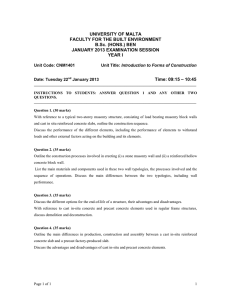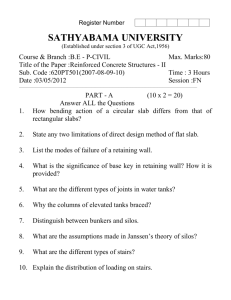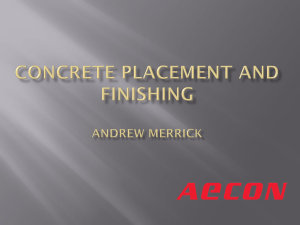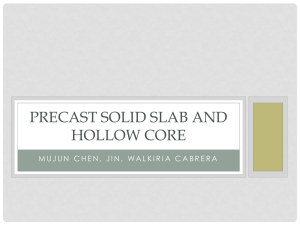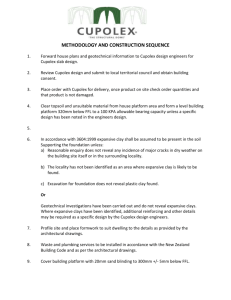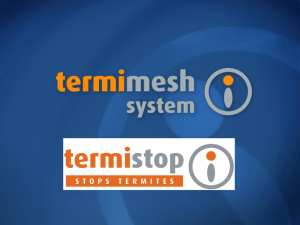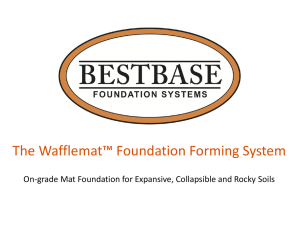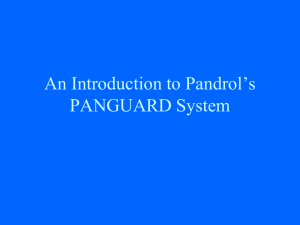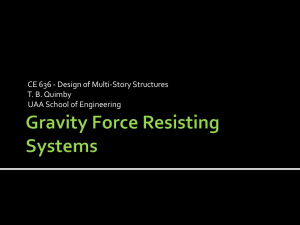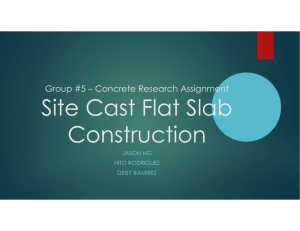LeslieRBT4Presentation1
advertisement
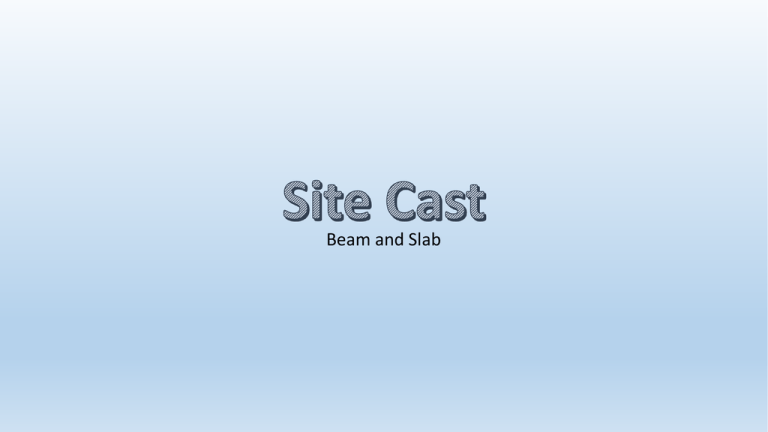
Beam and Slab Site cast that is cast into forms on site. • Typically used for storage facilities, and libraries because it can withstands heavy loads with relatively minimal depths. • In the 70’s is was a very popular structural system and can also be found in schools and office buildings built at that time. The most common site cast concrete is for foundations and slab on grades. • Two way systems and one way systems • Site cast concrete has made possible some of the most stunning building ever designed. It’s ability to be made into any shape has allows for the ultimate architectural creativity. Below are a few examples of what is possible with site cast concrete. Advantages • Sculptural possibilities -can do almost anything -form -surface texture • More energy efficient to produce than steel. • Long lasting • Concrete is generally produced and available locally. Benefits of site casting concrete. • Fire resistance • Fast construction • Mostly light, thus lowering foundation cost and allowing for longer spans • Resistance to seismic activity • Durable Finishes Ribbed slabs are constructed from wide band beams going through two columns Waffle slab are the deeper equivalent to ribbed slabs . Thy are ribbed slabs that span in both direction. Disadvantages • Long on-site erection time -prone to weather related delays. • Non-standardized construction can be very expensive. • -Effective spans • -Strength & Weaknesses ONE-WAY A One way slab is supported on two opposite sides of the structure, the forces of gravity only travel in one direction ,now if the slab is supported by all 4 sides but the ration from long side to short side is double then it the slab is considered one way. This is so because of the difference in lengths • Span:6’-12’ Two way slab are supported by all four sides but the ration from long side to short side are less then 2. thus speeding the gravitational load evenly throughout the structure. • Span:15’-40’ L-beam The system above is designed as one way continuous slab which is spanning across the t beam supports T beams and lbeams are more effective than conventional wide beams because of its greater width comparison flange and lever arm Flexibility and Diversity of Forms The Flexible Form is available 10' of length and heights from 4", 6" and 12",. Each form has seven reinforced stakes pockets on the back side that secure ¾" steel stakes and support the form while the concrete is being placed.. paving forms are used for major highways, streets, airport runways and taxiways and ramp construction. These forms are used for pouring super flat floors for warehouse floors where wire guides are used to maneuver or control material handling equipment. Slab Finishes: it is smooth as cast and remains that way in the finished construction. The exposed-to-view surface and is often painted in most cases. It also can be kept somewhat rough to receive a composite casting-place structural top surface of 2 to 3 in., as with double tees or gypsum topping. Beam Finishes: Since beams are cast upright, the bottom, sides, and ledges are cast against a form and will typically be provided with an “as cast” finish that results in a smooth, hard finish. The top is applied by the finishing crew and can be smooth and roughened to create a bond with cast-in- place concrete that can be poured on top. TWA Terminal, NY, Eero Saarinen Boston City Hall, McKinnell & Knowles About half of the concrete used in the building was precast — roughly 22,000 separate components — and the other half was poured-in-place concrete. cast-in-place elements are coarse and grainy textured because the concrete was poured into fir wood frames to mold it, while precast elements, such as trusses and supports, were set in steel molds to gain smooth, clean surfaces. This distinction can also be seen in the fact that the exterior poured-in-place pieces are of type I cement, a lightly colored cement, while the exterior precast components use type II cement, a dark colored cement.
